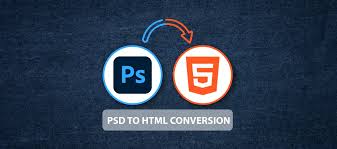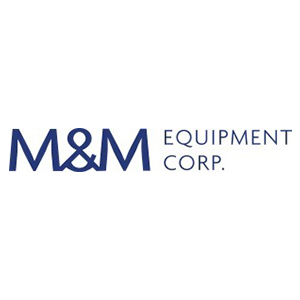The nature of the source text itself is the critical factor that dictates the success of PDF to HTML conversion services in India and is all too often ignored when businesses elect to digitize their document repositories. Whether your PDF contains native digital text or scanned images makes all the difference between a seamless conversion and an error-ridden, frustrating experience.
The difference between a conversion based on OCR and native text is not about trivialities in the realm of technology; rather, it has very important ramifications with respect to a project’s timeline, budget, and usability of resultant documents. Let’s get into the details of how these two approaches differ and what that means as far as the quality of your conversion.
For more information, visit **Scan Search Document**
What is Native Text in PDFs?
Native text is those PDFs that have been created directly from digital sources like Word documents, Excel spreadsheets, or any file created by a design program like Adobe InDesign. If you export your document into a PDF format, the text will be in the form of selectable and searchable digital characters embedded within the file structure.
This is the gold standard for PDF-to-HTML conversion. Why? Because the text already exists in a machine-readable format. Native text PDFs are relatively easy to convert into HTML, since the characters, fonts, and basic formatting are already defined digitally. Professional PDF-to-HTML conversion services in India can extract that information with remarkable accuracy, preserving text integrity and much of the original formatting.
**Advantages of Native Text Conversion **
The advantages are great. First, accuracy rates tend to be over 99% because there is no interpretation involved—the text is already there. The second advantage would be much quicker conversion times, meaning quicker turnaround times and lower costs. And lastly, tables, hyperlinks, and metadata will be more reliably retained because they’re part of the original digital structure.
Understanding OCR Technology in PDF Conversion
Optical Character Recognition, or OCR for short, refers to the technology involved when your PDF is basically a photo of some text: scanned documents, photographed pages, or image-based PDFs. This involves the use of OCR software that tries to recognize text from visual patterns found within those images, effectively making them editable and searchable.
Think of OCR technology as a way to teach a computer to “read” much in the way humans do. It finds shapes that resemble letters and then compares those shapes against known patterns of characters, making educated guesses about what text the shapes might represent. While modern OCR technology has greatly improved, conceptually, it’s still very different from working with native digital text.
The OCR Challenge in PDF to HTML Conversion
When you outsource OCR-based document conversion services in India, the process will get inherently complicated. Most importantly, the quality of your original scan is crucial. Poor image quality, unusual font, handwritten notes, or complicated layout can badly affect accuracy. The usual accuracy of OCR, even under ideal conditions, is 95-98%. This means that errors are expected and further human review and correction will be required.
Also, OCR fails to maintain ideal formatting: tables do not convert properly, multiple-column layouts go awry, and special characters or symbols might be misinterpreted. That does not mean conversion through OCR is impossible or even inadvisable-just that it requires more sophisticated processing, along with extra quality control.
How Source Type Affects Conversion Quality
The type of source text creates a ripple effect throughout the whole process of conversion. Now, let’s discuss its practical implications along different dimensions of quality.
Accuracy and Error Rates
Native text PDFs have a very high fidelity conversion to HTML – characters are characters, not interpretations of visual patterns. The documents that have gone through OCR always have some errors: substituted letters like “rn” interpreted as “m”, missed characters, or completely misread words, especially on degraded source material.
Retaining Format and Layout
By nature, native text conversions retain the visual layout of a document: headings, paragraphs, lists, spacing-all these are usually intact because they belong to the digital markup. OCR conversions struggle more with this, as first the software has to understand the layout, then try to rebuild it in HTML. The latter normally deviates quite a bit from the original, at least where complex document designs are concerned.
Special characters and multilingual content
Where the chasm opens wide: Special characters, mathematical symbols, and multilingual content are child’s play for native text because they are stored as Unicode characters. OCR systems-especially the older, less sophisticated variety-can be tripped up by accented characters, non-Latin scripts, or specialized symbols, misrepresenting them as gibberish-or worse, omitting them altogether.
Choosing the Right Approach for Your Documents
So, how do you tell which conversion method your documents require? The test is quite simple: can you select and copy text from your PDF? If yes, then you have native text. If clicking-and-dragging doesn’t select actual text, then you have an image-based document that requires OCR.
Working with Mixed-Source Documents
Few real-world cases are entirely black and white. Most PDFs contain both native text and embedded images with text. Perhaps you have a digitally created report with signature pages scanned, or a Word document with photographed charts. Quality PDF to HTML conversion services in India should take note of the composition of each document and apply whatever hybrid approach may be necessary: direct extraction for native text, OCR only where needed.
Why Professional Conversion Services Matter
These technical differences between OCR and native text conversion may be somewhat academic, but there are some real business consequences to these differences. The DIY conversion tools and automated solutions also often do not address these differences, using one-size-fits-all approaches that result in less-than-desirable outcomes.
Professional conversion services have several advantages. They perform source analysis even before they begin working: they analyze documents in order to choose the proper extraction method. They can use advanced OCR engines, trained with diverse fonts and languages where required. Most importantly, they incorporate human quality control into their processes to catch and correct the errors that automated systems miss.
What you’re buying, when you contract with experienced PDF to HTML Conversion Services in India, is not access to software; it’s expertise in handling the innumerable edge cases and quality issues from real-world document conversion projects.
Optimizing Your Conversion Project
Whether working with OCR or native text sources, several steps can be taken to optimize results. For the future, when possible, create PDFs directly from digital sources rather than printing and then scanning. If scanning is necessary, high resolution-minimum 300 DPI-with good contrast, keeping pages flat and aligned can go a long way.
When sending sample pages for a conversion project, these should represent the full range of complexity for your set. In this manner, the partner that you will be converting with can make accurate estimates regarding the requirements of the work, allowing for realistic timelines and pricing.
Conclusion
The quality of your PDF-to-HTML conversion will be fundamentally different depending on whether you start with native digital text or image-based content needing OCR processing. You will get superior accuracy, faster conversion, and better preservation of formatting with native text, while OCR-based conversion requires more sophisticated processing and quality control; often, more time and expense are involved.
Understanding this distinction will allow you to set proper expectations, budget accordingly, and select the right conversion partner. Whether you’re digitizing historical archives or modernizing business documents, your first step toward successful document transformation projects involves recognizing how source text type impacts conversion quality.


